13+ Best SEO tips for BigCommerce stores in 2021
BigCommerce is an online store developer that helps you develop and personalize a store. Using BigCommerce, you can sell not only on your website, but also on Amazon, eBay, and even Facebook. Therefore, BigCommerce should be at the top of the list if you’re searching for a multi-channel selling platform.
However, the problem of selling online is that you need traffic. If you don’t get traffic to your site, you won’t get any buyers. When you can’t get buyers, you won’t get any money in. Given how difficult it is to create an e-commerce shop in the first place, adding selling tactics and marketing strategy to get people to your online store isn’t an easy job either.
Lucky for you, this is where SEO kicks in. In this article, we would like to look at the capabilities of BigCommerce SEO and provide some tips to help you get more traffic to your store.
What is SEO, and how important it is
SEO definition.
SEO stands for Search Engine Optimization. In other words, SEO is known as the method of optimizing your website so that search engines like Google and Bing can understand. The quicker it is for Google to figure out what your online shop is about, the higher the ranking – meaning that your pages end up showing up on the first or second page of search results.
How important is SEO?
Consider SEO to be a car race between 2 racists. To remain competitive, both of the cars (websites) are competing for the top spot (ranking), so the owners must continuously upgrade their vehicles (optimize). You may have a beautiful car on the outside, but if your rival has a Lamborghini-like engine, you won’t be able to compete.
In other words, SEO gives you a massive advantage over your competitors. If two e-commerce sites sell the same items, the one that is more search-engine-optimized will get more traffic, and more sales.
When people Google something, they will 99% click one of the top 5 results in the result pages. Also, everyone trusts Google, and placing first on the search engine result page indicates to searchers that your content is reliable. The higher you rank on Google results pages, the more visitors and traffic your sites can get. SEO further enhances the consumer experience, increasing the likelihood of repeat purchases.
SEO is also cost-effective. While market leaders can afford to spend a lot of money on paying internet traffic, this is not usually the case with small to medium businesses. So, if you’re on a tight budget, SEO is a perfect way to get users to your sites without having to invest a fortune in Google Ads.

Why BigCommerce platform is good for SEO?
BigCommerce’s SEO capabilities are outstanding right out of the box. The developers designed this platform with quality standards in mind, so you can be sure you’re not going backward.
BigCommerce also offers you a mobile-friendly interface that uses Accelerated Mobile Pages (AMP), so your site would always be well-suited to your smartphone audience. That’s a huge plus for your SEO, especially with Google’s recent mobile-first indexing.
BigCommerce understands that SEO will always necessitate more resources and customization. They have a variety of resources to help you customize your platform for SEO purposes. Of course, you have a well-stocked app store, much like other e-commerce sites, that will help you extend both your store’s scope and your SEO capability.
In BigCommerce Marketplace, you can find hundreds of
- Free and paid themes that are easy to customize.
- Shopping cart.
- Payment gateways integration such as Stripe, PayPal, Apple Pay.
- Many marketing tools
- Marketplace, Facebook, eBay, Pinterest integration
- Multiple email providers, and more.
- Inventory, shipping, and return management software.
- Dropshipping & warehouse integration.

Let’s go through some other reasons why BigCommerce is very good for SEO.
- Every BigCommerce store is PCL Level-1 compliant, and all plans come with SSL certificates.
- BigCommerce URLs are entirely adjustable, and you can also create short URLs, which are better for SEO.
- You can easily modify Bigcommerce page titles, meta descriptions, and headings, which ary crucial for search engine results.
- BigCommerce sites are mobile-friendly, since many of the templates are sensitive. Many of them adopt the AMP format (Accelerated Mobile Pages), which speeds up page loading and improves SEO.
- Both plans include Akamai Image Manager, which optimizes all of your images and increases the load time of your Bigcommerce website automatically.
- You can create 301 redirects and sitemaps for Google Search Console.
So, all things considered, ** BigCommerce’s SEO is very competent**. If you want to stay ahead of the competition, you have plenty of resources at your disposal to do so.
However, there are some SEO blind spots that you’ll need to address to completely optimize a BigCommerce shop. We’ll look at some tips in the remainder of this article to help you do exactly that.
13 Best SEO tips for BigCommerce Stores
1. Do proper Keyword research.
What SEO does best is helping you word your content, eventually making your ranks higher on every search engine by using keywords.
If you have this part wrong, you’ll
- target keywords that are too challenging to rank and probably never make it to page one.
- rank with keywords that don’t get any traffic or don’t lead to any sales.
Neither of these scenarios is good, which is why e-commerce keyword research is crucial. Keyword research ensures you target keywords that are relatively easy to rank with, has a reasonable search volume, and have good conversion rates.
Using Amazon.
People search Amazon with the intent of purchasing something. Therefore, Amazon is a gold mine full of strong buyer intent keywords.
For example, let’s try “mask.”
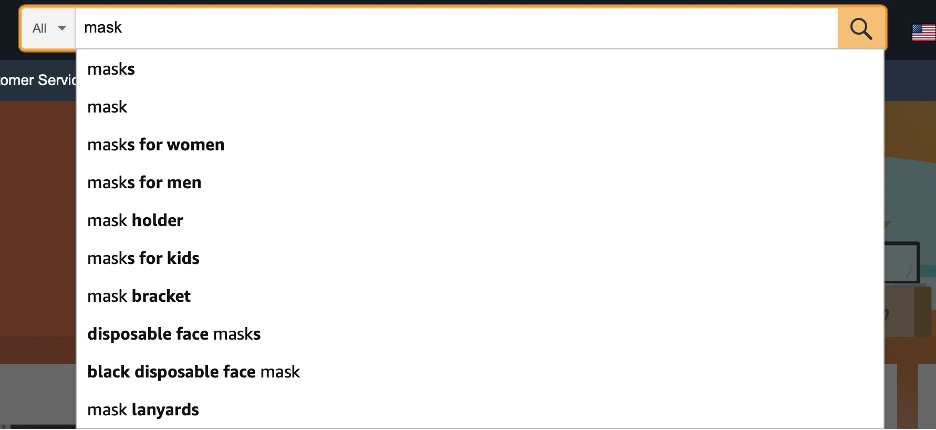
and Amazon will spit out autofill recommendations like mask bracket, mask disposable, mask lanyards, etc. You can put all of these keyword suggestions into a Google spreadsheet to save for later. The research-and-save process could take a long time if you have hundreds of items, as you might expect. If this is the case, then Amazon Keyword Tool will help you do that.
You now have 24/7 potentially high-buyer-intent keywords only by typing in and finding “Mask.”
Using Google.
In order to complement what you find on Amazon, you can even use the Google search results to your benefit.
Most people are unaware that every Google search results page contains valuable information that can be used to improve your SEO. Take a peek at how much detail you can derive from this Google snippet. In this case, we type in “lunchbox.”
The “people often ask” section is a list of other people’s questions on this keyword. These inquiries are simply long-tail keywords that people have a demand for.
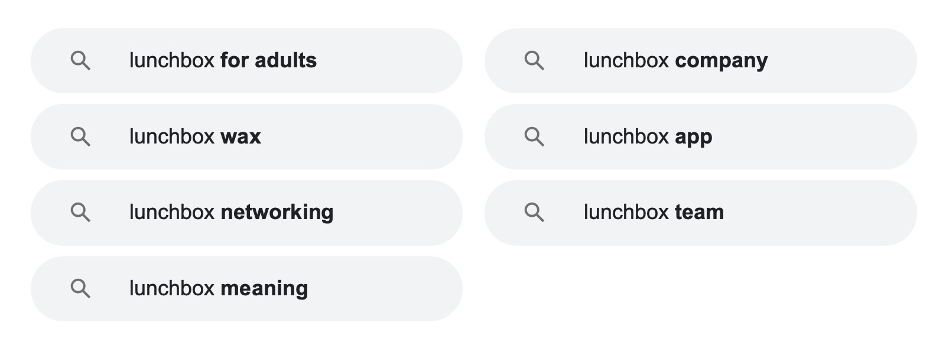
Using competitors’ keywords.
If you have competitors that have higher ranks in search results than you, you can always snatch keyword ideas from their websites.
First, go to Google and type in the keyword. We choose “disposable masks” in this case.
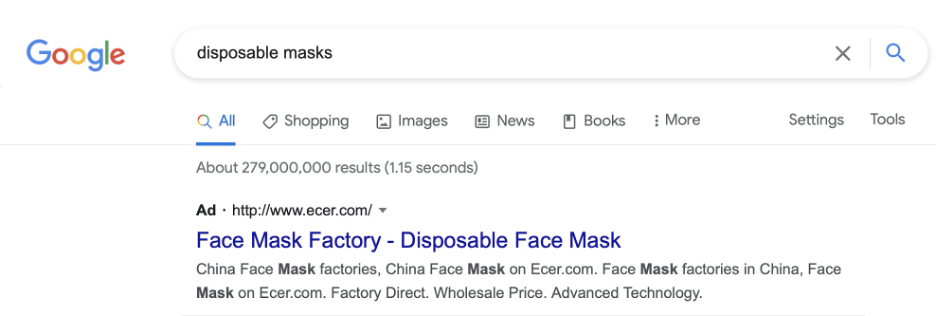
and look for keywords on their type and product pages.
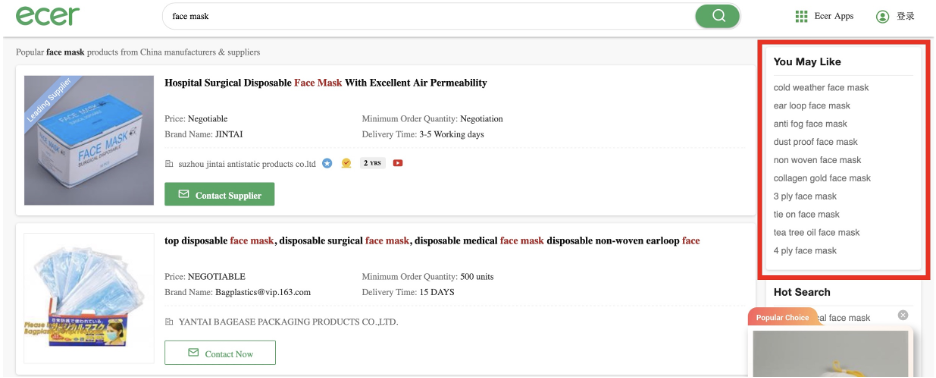
However, don’t just copy and paste your competitor’s keywords! They may rank higher than you, but that doesn’t necessarily mean the keywords they chose are better.
How to know if the keywords you chose work or not.
To decide which keywords to use, you must first determine keyword difficulty, search frequency, and buyer intent.
Using Google Keyword Planner, you can get a general idea of search volume and CPC (to assess buyer intent).
Let’s look for Dachshund gifts. The CPC is the “suggested bid.” As previously stated, a high CPC implies a high level of buyer intent.

What you’re looking for here is a high CPC relative to the other CPCs — $0.80 could be a steal in specific niches. $0.80 is a lot of money in some cases (like Dachshund gifts).
In your sheet, make a list of the volume and buyer intent for all of your relevant keywords.
Simply rate it as “low,” “medium,” or “high” based on its CPC in comparison to the average CPC for other keywords in your niche. For example.
| Keyword | Search Volume | Difficulty | Buyer Intent Level | CPC |
|---|---|---|---|---|
| Sausage Dog Gifts | 4.400 | ? | Medium | $0.63 |
| Dachshund merchandise | 2.900 | ? | Medium | 0.52 |
| Dachshund Christmas Cards | 590 | ? | Low | 0.41 |
| Dachshund Gifts for her | 590 | ? | High | 0.8 |
Of course, there are some apps, such as Ahrefs, that will do this for you automatically, so that’s the direction I’d take.
2. Know who you are competing with.
Failing to check what your competitors are ranking on is one of the most common problems of SEO. The simplest method is to open a web browser, go to Google, and type in the precise keyword you want to target. Then examine the list of pages that appears.
Examining the competitors’ on-page keyword approaches as well as the inbound links leading to their pages can give you a general idea about their SEO approaches.
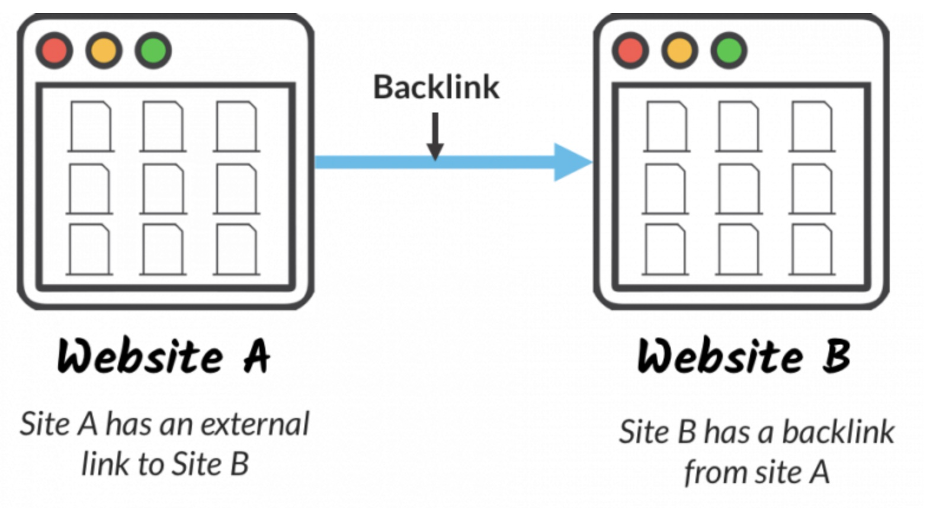
Looking at data available to consumers can provide some indicators of one’s SEO approach. Examine the page names, meta descriptions, and copy on the page. Do you think there’s a concerted effort being made to improve product pages? Is the copy flowing freely, or are keywords being crammed in? Are there any relevant keywords that they’ve overlooked that you can use to your advantage?
Next, look at their backlink profile and see how many high-quality websites link to them. Inbound links are a significant factor in determining a website’s authority.
If a competitor has a blog, you can look at how often it is posted and what subjects they cover. Any companies that take inbound marketing would seriously refresh their posts at least once a week. You can examine their social media posting buttons to see how many comments and shares they’ve received, which would give you an indication of how well the target audience receives their content.
3. Add Alt Images to your Product Photos.
Alt tags are how Google or any other search engines understand images. Let’s say someone searches for ‘local honey,’ and your page has an image tagged with ‘local-honey-200ml-pot,’ Google would be more inclined to rank you higher for that keyword.
When it comes to setting up perfect BigCommerce SEO, keep in mind that search engines are fundamentally blind, only capable of understanding text, not images. It’s critical to have keyword-optimized tags in every picture, including product images, marketing banners, and others, in order to improve your rankings.
Alt-text isn’t only useful for SEO; it’s also crucial for usability. People with disabilities often use screen readers to get a description of images. If there is no alt tag, the screen reader will show the image’s file name, which is made up of meaningless numbers and letters. If your page doesn’t load the image, the shopper will see a series of random text instead of an accurate depiction of the image.
4. Integrate with Google Analytics
BigCommerce is a powerful eCommerce solution platform because it provides customers with automated monitoring and analytics with its built-in software, allowing company owners to learn more thoroughly about their standing. But this is not enough for SEO. Company owners should take that a step further to integrate with notable names, like Google Analytics, to determine their organic presence on the search engine.
5. Use SSL Certificate:
SSL stands for Secure Sockets Layer, a more stable variant of a website that search engines favor. Sites that do not use SSL use the http:// format, while those that do use SSL use the https:// format. An “s” does not seem to be a big difference right now. However, suppose someone opens a non-SSL user website while browsing the internet. In that case, all search engines issue an alert for unsecured web pages, which may scare visitors away and negatively impact sales.
BigCommerce, on the other hand, has an SSL certificate as a standard feature for all of its customers, making it a highly protected network that many search engines favor. Encryption Everywhere is the version of the SSL that comes free with all BigCommerce standard plans, but users can upgrade to a better understanding or use their third-party SSL certificate if they prefer. The only issue that could arise is that if the third-party SSL is applied poorly, it may negatively affect the website and online shop.
6. Register your BigCommerce store with Google Search Console:
Registering with Google Search Console is something all web designers who are concerned about SEO should do, irrespective of the platform they’ve used to build it in the first place.
Registering your website with Google Search Console allows you to inform the search engine that your websites exist and ensure that they are crawled.
When registering with Google Search Console, you should keep in mind that you can register both the www and non-www versions of your domain (for example, www.abc.com and abc.com), as well as both the http:// and https:// versions.
You can see how to add your website to Google Search Console here.
7. Use Structured Data and rich snippets
Structured data means code written for search engines to make sense of. Search engines interpret the code and then use it to show search results in different ways, such as a picture, a review, a price, etc.
These results are called “rich snippets” since, unlike typical search results, they are “rich” with information. Rich snippets are handy for recipes, and it’s also used to show cooking time, stars, calories, and pictures of the finished product, etc.

Rich snippets are a vital SEO feature, even though Google doesn’t use them as a ranking criterion. When there are hundreds of options, any additional information that makes the result stand out is a win.
They’re also great for voice searches. Structured data assists Google in understanding what the website is about, so whenever it appears on a SERP, a voice assistant (Siri, Alexa, etc.) will be able to comprehend it as well. Voice search is an essential tool to have in your SEO arsenal, especially as voice assistants become more common these days.
8. Integrate on-site Blogs.
Another tip that can benefit the BigCommerce owner is the use of blogs on the site. It is because blogs are something that SEO experts can modify to their advantage. Instead of reading lengthy documents and hefty content, having blogs on-site provides users with a snapshot of the knowledge that they need. You can also easily edit various aspects of the blog, such as the title, meta description, and even alt text in photos, to create a more audience-friendly website, mainly by employing the appropriate keywords. It’s much easier to update a blog than it is to edit a whole page or store.
9. Create Short URLs.
Short URLs are beneficial to both SEO and user experience. When you come across something on Social media, do you want to click on a link that goes like http://www.abc.com/index.php?idsezione=360&sid=3a5ebc9654690864 or you would want to go with https://www.abc.com/local-honey,
See, every URL on your site should be as precise and concise as possible to maximize organic traffic (and rankings).
Lucky for you. BigCommerce is an excellent option for this. BigCommerce, unlike other e-commerce platforms, lets you change URLs manually without having to add prefixes to the sites or items. For example, for category pages, you don’t need to include /category, and for product pages, you don’t need to have /products.
10. Ensure that your online store is Mobile Friendly and Responsive.
Since today’s generation is tech-conscious and people always carry the latest smartphone versions, it’s critical that your online shop caters to that market segment with care.
The simplest thing you can do is to enable Accelerated Mobile Pages (AMP) setting for your BigCommerce pages and posts. AMP allows you to display incredibly fast-loading versions of your content in mobile search results. Google prioritizes AMP content in search results, so your pages are more likely to show up in the “Top Stories” carousels. Also, as AMP-enabled sites load rapidly on mobile devices, they’re more likely to be read (thus increasing the dwell-time on your content, which many SEO professionals deem to be a positive ranking signal).
To use AMP with BigCommerce, make sure you’re using a template that supports it (check the ‘AMP Enabled’ filter in the BigCommerce theme store to see AMP-friendly templates). After that, it’s just a matter of going to BigCommerce’s Advanced Settings and turning on Google AMP.

AMP-enabled templates will be very profitable to the business’s future. So even though the owner has to pay a little more for these templates, it is worth it.
11. Make your online store load fast on desktop
Page speed is a critical indicator that search engines use to rank websites, with faster pages being given priority over slower ones. There are a few things you can do to speed up the loading of a BigCommerce site:
- Minimize file image size – you can use image compression software. Some BigCommerce templates (Stencil selection) enable you to use Akamai Image Manager, which automatically optimizes your photos to include the best combination of scale, resolution, and file type for the computer on which they’re being displayed. If you’re not using the Stencil theme, you can use compression tools like Tiny Png to shrink the scale of any images you upload to BigCommerce.
- Stay away from a large number of web fonts on your pages, and consider replacing them entirely with web-safe fonts.
- Avoid too much External Material – Because BigCommerce has its web hosting and coding facility, getting in any other external hosting is difficult. Also, having external scripts or special codes from third parties on your website will cause your page to load slowly.
12. Optimize Header Tags and Meta Tags of all Product Pages
Meta descriptions and tags are a simple way to improve your search engine rankings. They are clickable links on the search engine results page and offer a brief explanation of the web page and online store. Meta descriptions and tags give information about what is available in your online shop, and it’s a perfect way to lure them if your store has just what they’re searching for.
You should also spend some time optimizing page titles, header tags, and titles. These things are where you can add keywords that are appealing to the majority of people to lure them to the websites.
13. Never Use Copied Content
When you have multiple products, it can be pretty convenient to just copy the product descriptions and/or content provided to you by the supplier. However, unless you want to do harm to your own sites’ rankings, never do this.
Search engines can easily find the same content on your site as on your rivals’ sites that sell the same things that you do, not to mention the supplier’s website itself. Duplicated content can put you at risk of being penalized for “copying” posts from a higher-ranking website, and that will damage you in the long run. Rather, you better off writing your own definitions and using one or two heavily targeted keywords.
Final Thoughts
It is important to note that search engine optimization should not be a last-minute concern. Rather, think about it during the e-commerce site development phase and apply methods when you expand the Bigcommerce store. Of course, if you’ve read this far and find a nap sounds far more appealing than following these steps, don’t worry. SEO, after all, is a never-ending process.
We wish you a thriving e-commerce career.





